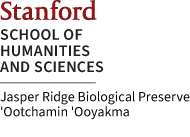Highlights
- •
Wild animals host a large diversity of E. coli including strains of human origin
- •
Individuals carry multiple strains simultaneously, facilitating within-host mixing
- •
Clinically relevant antimicrobial resistance was found on mobile genetic elements
- •
Transmission of E. coli occurs in the wild and across the wildland-urban interface
Human and domesticated animal waste infiltrates global freshwater, terrestrial, and marine environments, widely disseminating fecal microbes, antibiotics, and other chemical pollutants. Emerging evidence suggests that guts of wild animals are being invaded by our microbes, including Escherichia coli, which face anthropogenic selective pressures to gain antimicrobial resistance (AMR) and increase virulence. However, wild animal sources remain starkly under-represented among genomic sequence repositories. We sequenced whole genomes of 145 E. coli isolates from 55 wild and 13 domestic animal fecal samples, averaging 2 (ranging 1–7) isolates per sample, on a preserve imbedded in a human-dominated landscape in California Bay Area, USA, to assess AMR, virulence, and pan-genomic diversity. With single nucleotide polymorphism analyses we predict potential transmission routes. We illustrate the usefulness of E. coli to aid our understanding of and ability to surveil the emergence of zoonotic pathogens created by the mixing of human and wild bacteria in the environment. [link to publication]



